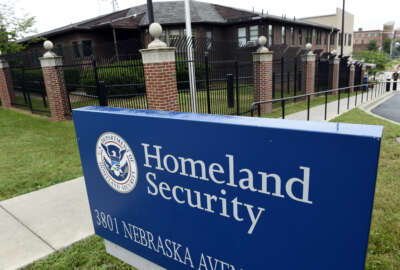
Buried in case data, DHS uncovers collaborative fix
Homeland Security Investigations said it's found a way to save precious time and resources for agents and investigators who sift through mass amounts of data and...
Homeland Security Investigations seized nearly six petabytes of data — or roughly 77 years worth of high definition video — last year.
With about 6,000 agents and 300 investigators, DHS Investigations didn’t nearly have the manpower to sift through and categorize vast amounts of images in the unit’s child exploitation cases.
It was the sheer volume of images that prompted the DHS Investigations unit to partner with several members of industry and a few non-governmental organizations to form Project VIC, a consortium of national and international organizations. Together, they developed a program that organizes the data and images into one common format, which helps agencies communicate and share information with each other more easily.
“There’s so much data involved,” said PJ Lechleitner, deputy assistant director for Immigration and Customs Enforcement’s Homeland Security Investigations Cyber Division. “There’s so much evidence and so much information to go through that it really takes an inordinate amount of time to conduct the investigations. The genesis of VIC was essentially, how do we address this problem, how do we categorize the evidence? How do we allow the investigators and the analysts to more efficiently and thoroughly go through the voluminous amount of information we have?”
Since Project VIC first got its start in 2013, the program has not only helped the unit more efficiently identify the offenders but also helped it more quickly find victims, said Lechleitner, who described the unit’s new approach as more “victim-centric.”
“It started as a grassroots effort to combat child exploitation, because all of the agencies involved with the effort realized that we were potentially missing a lot of victims in this area [and] programmatic effort, and we needed to come up with a solution to identify ways to try and stop that,” he said.
While the project is helping the unit save more time, it’s also breaking down old stovepipes between various law enforcement agencies, Lechleitner said. In the past, agencies inevitably missed images or other pieces of information important to their cases as they communicated back and forth with other organizations.
And Project VIC will continue to grow, particularly as the cyber environment grows more and more complex, Lechleitner added.
“Specifically, one of the things we’re trying to work on is identifying image data not just by hash values but also more outside-of-the-box thinking on different ways to identify the images and the evidence so that we’re hopefully not missing things,” he said.
Copyright © 2025 Federal News Network. All rights reserved. This website is not intended for users located within the European Economic Area.
Nicole Ogrysko is a reporter for Federal News Network focusing on the federal workforce and federal pay and benefits.
Follow @nogryskoWFED




